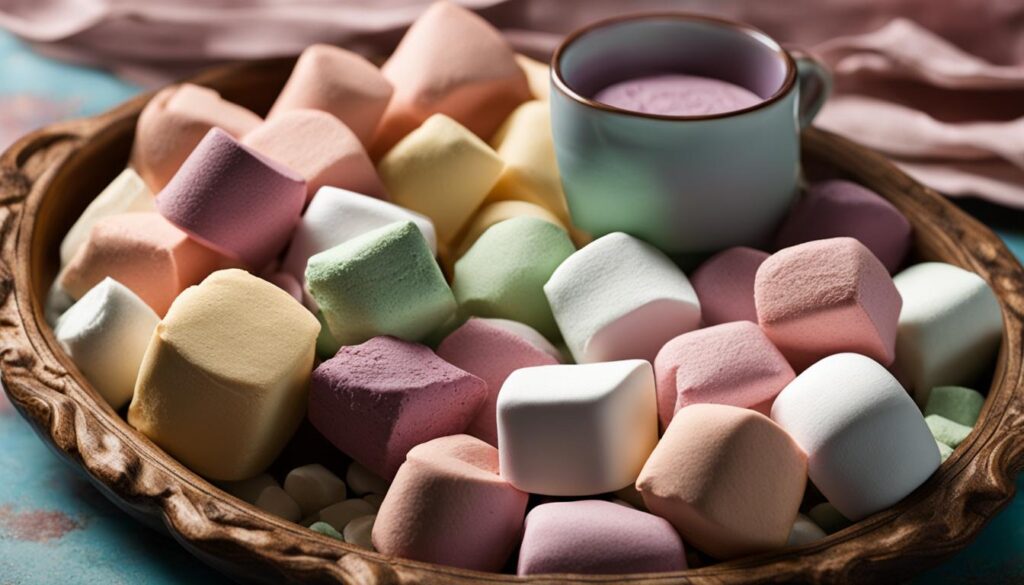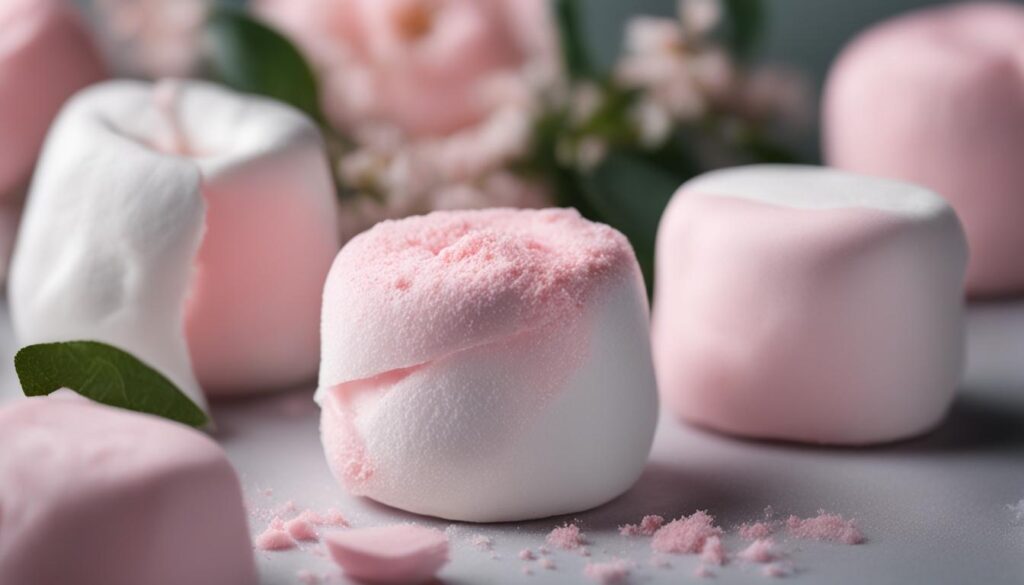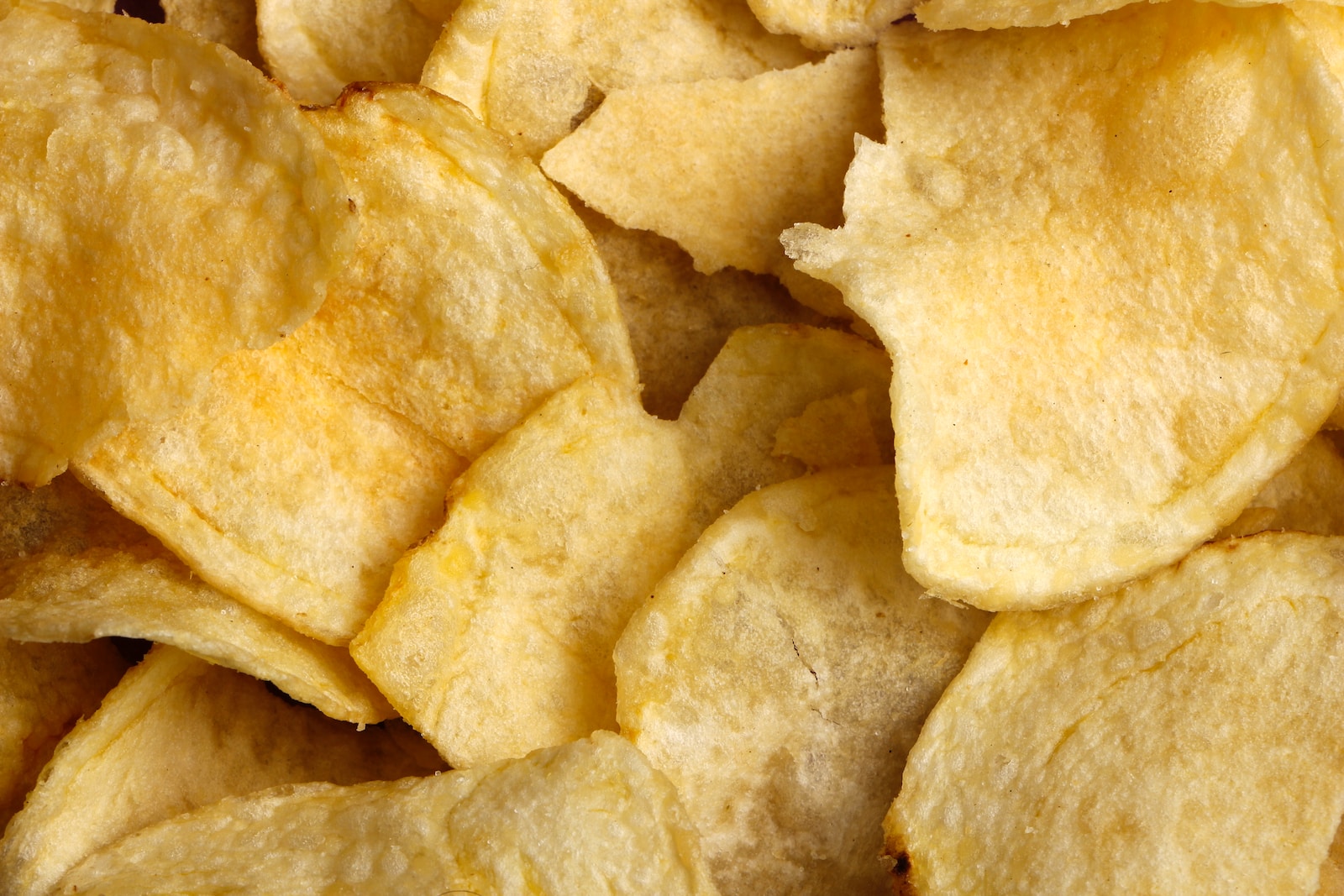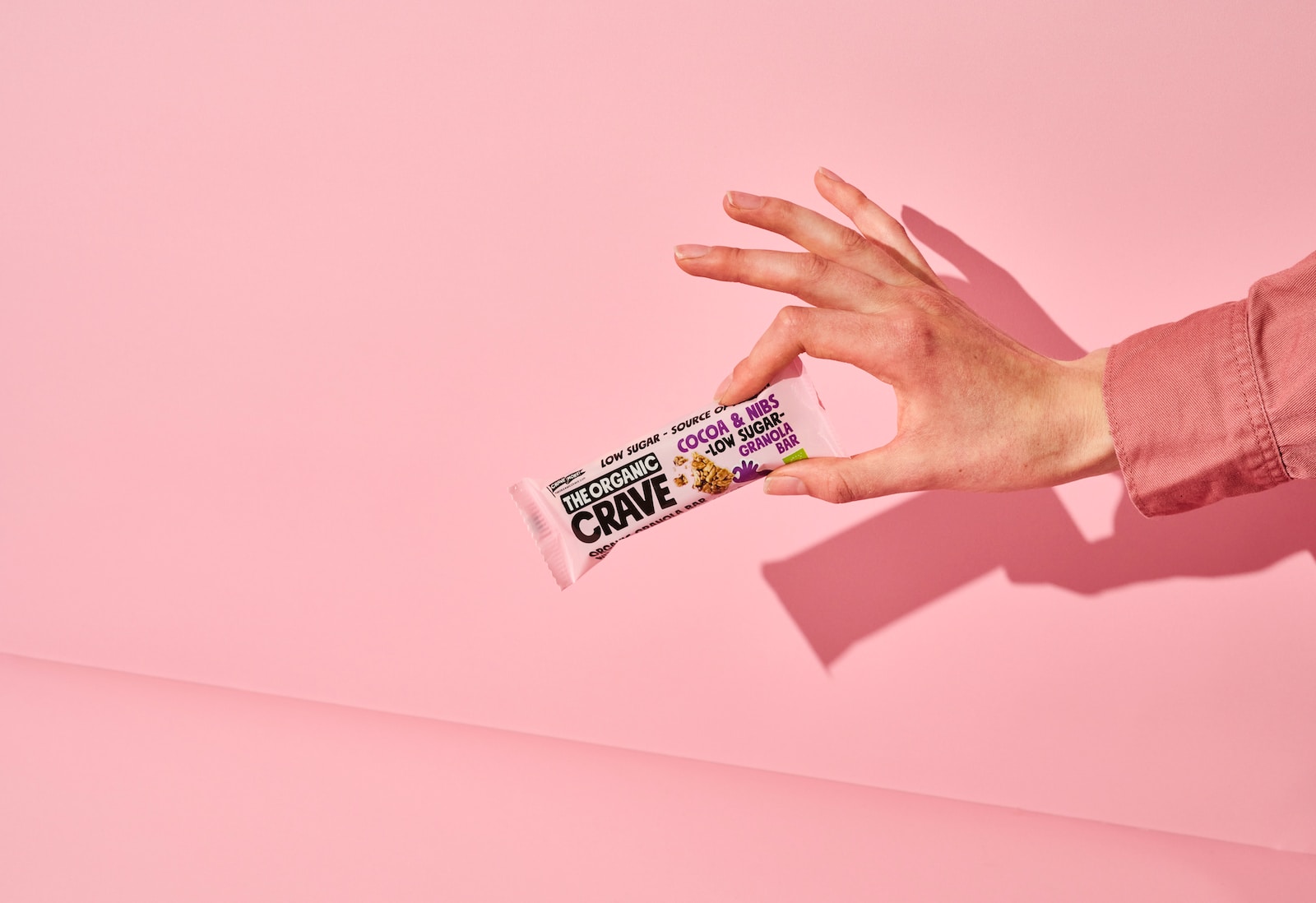Marshmallows and meringue are two confectionary delights that may appear similar but possess distinct differences. Understanding these differences is essential in appreciating the unique qualities of each. While both marshmallows and meringue are based on suspending sugar in an airy medium, they differ in terms of their ingredients and preparation methods.
Key Takeaways:
- Marshmallows are made with gelatin, giving them a chewy texture, while meringue is made by whipping egg whites until stiff peaks form, resulting in a flaky and crisp texture.
- Marshmallows and meringue differ in terms of the ingredients used in their preparation, with marshmallows incorporating gelatin and meringue relying on egg whites.
- Marshmallows have the ability to hold their form and bounce back when squeezed, while meringue is known for its delicate and airy texture.
- Marshmallows are versatile in their culinary uses, being enjoyed on their own or incorporated into various desserts, while meringue is commonly used as a topping or baked to perfection in desserts like pies and pavlovas.
- When making marshmallow meringue, it is important to whip the egg whites gradually and add sugar slowly to achieve the desired texture and stability.
The Three Types of Meringue
Meringue, a sweet and airy dessert topping, comes in various types that each have their own unique characteristics. Understanding the differences between Italian meringue, French meringue, and Swiss meringue can help elevate your culinary creations.
Italian Meringue
Italian meringue is a smooth and stable variety that is perfect for topping pies and creating decorative elements. It is made by slowly pouring hot sugar syrup into whipped egg whites, resulting in a glossy and marshmallow-like texture. This type of meringue requires cooking the sugar syrup to a specific temperature and carefully incorporating it into the whipped egg whites to create a stable and luscious consistency.
French Meringue
French meringue is the most common and simplest type of meringue. It is made by beating egg whites to form soft peaks, then gradually adding sugar until stiff peaks form. French meringue is light, delicate, and often used in recipes for pavlovas, macarons, and meringue cookies. It has a crisp texture when baked and can be easily piped into various shapes for decorative purposes.
Swiss Meringue
Swiss meringue is a denser and more stable type of meringue. It is created by gently heating egg whites and sugar in a double boiler until the sugar is completely dissolved. The mixture is then whipped to form a glossy and silky texture. Swiss meringue is commonly used as a base for buttercream frosting and is also a great option for creating elegant meringue-topped desserts like lemon meringue pie and baked Alaska.
| Type of Meringue | Main Characteristics |
|---|---|
| Italian Meringue | Smooth, stable, glossy texture |
| French Meringue | Light, delicate, crisp texture when baked |
| Swiss Meringue | Dense, stable, silky texture |
The Making of Marshmallows
Marshmallows are a delightful confection made by whisking together sugar, water, and gelatin. Unlike meringue, which incorporates sugar into egg whites, marshmallows use gelatin to achieve a light and airy texture. This unique preparation process results in a chewier consistency compared to the flakiness of meringue.
The combination of sugar, water, and gelatin is key to creating marshmallows with their signature texture. Gelatin acts as a stabilizer, allowing the mixture to hold its form better and bounce back when squeezed. This gives marshmallows their fluffy and marshmallow-like qualities that we all love.
The process of making marshmallows involves carefully heating the sugar, water, and gelatin mixture until it reaches a specific temperature. It is then whipped to incorporate air, creating the light and fluffy texture. The mixture is then poured into a pan, where it sets and can be cut into the familiar marshmallow shapes that we enjoy.
The Origins of Marshmallows and Meringue
The history of marshmallows dates back to ancient Egypt, where the sap of the mallow roots was used to create a sweet treat. The sap was extracted, whipped with honey, and allowed to set into a soft and sticky confection. The Egyptians enjoyed these marshmallow-like confections for both culinary and medicinal purposes.
In medieval Europe, the use of mallow roots in making marshmallows continued. However, it wasn’t until the 19th century that the process evolved with the introduction of gelatin, replacing the mallow sap. This innovation allowed for more consistent texture and flavor, leading to the modern marshmallow we know today. Gelatin, combined with sugar and water, yielded a fluffy and chewy treat that became popular worldwide.
Meringue, on the other hand, is believed to have originated in France during the 17th century. The technique of whipping egg whites to create a light and airy mixture was first documented in a French cookbook by François Massialot in 1691. From France, the art of making meringue spread across Europe and eventually to other parts of the world. Today, meringue is a staple in many cuisines and is used in various desserts, including pies, tarts, and baked Alaska.

Table: A Brief Comparison of the Origins of Marshmallows and Meringue
| Marshmallows | Meringue |
|---|---|
| Originated in ancient Egypt | Originated in France during the 17th century |
| Made using mallow roots and later evolved to include gelatin | Made by whipping egg whites until stiff peaks form |
| Medicinal and culinary purposes in ancient Egypt | Used in various desserts across different cuisines |
Characteristics of Marshmallows
Marshmallows have distinct characteristics that set them apart from meringue. Understanding these characteristics is essential in appreciating the unique qualities of marshmallows and how they differ from their confectionary counterpart. Here are some key features that define marshmallows:
- Chewy Texture: Marshmallows are known for their chewy consistency, which is achieved by whisking gelatin with sugar and water during the preparation process. This creates a delightful mouthfeel that is different from the flaky and crisp texture of meringue.
- Form Holding Ability: One of the remarkable attributes of marshmallows is their ability to hold their form and bounce back when squeezed. Due to the inclusion of gelatin, marshmallows have a structural integrity that allows them to maintain their shape even under pressure.
- Ingredients: Marshmallows typically consist of sugar, water, and gelatin. The combination of these ingredients gives marshmallows their unique texture and form. Gelatin plays a crucial role in achieving the chewiness and form-holding ability of marshmallows.
These characteristics make marshmallows a versatile ingredient in various desserts and a popular choice as a standalone treat. Whether enjoyed in a s’more, used as a topping, or incorporated into a recipe, marshmallows bring a distinct texture and flavor to any dish.

Comparison between Marshmallows and Meringue
| Marshmallows | Meringue |
|---|---|
| Chewy texture | Flaky and crisp texture |
| Sugar, water, and gelatin | Egg whites and sugar |
| Form-holding ability | Light and delicate structure |
Culinary Uses of Marshmallows and Meringue
Both marshmallows and meringue have a wide range of culinary uses, offering delectable options for desserts, beverages, and more. Let’s explore the diverse ways these confections can be utilized in the kitchen.
Marshmallow Uses
- As a topping: Marshmallows are a popular choice for adding a sweet and fluffy touch to various desserts. They can be sprinkled over pies, cakes, and sundaes to enhance the presentation and provide a delightful contrast in texture.
- In hot beverages: Marshmallows are a classic ingredient in hot cocoa, where they slowly melt and create a creamy and indulgent drink. The addition of marshmallows adds a touch of sweetness and a velvety smoothness to the warm beverage.
- As a standalone treat: Marshmallows can be enjoyed on their own as a delicious sweet treat. Their soft and chewy texture, combined with their subtle sweetness, makes them a delightful snack for people of all ages.
Meringue Uses
- In desserts: Meringue is a versatile ingredient that can be incorporated into various desserts. It is commonly used to create light and airy fillings for pies, tarts, and cakes. The delicate texture and slight sweetness of meringue add a touch of sophistication to these desserts.
- As a decorative element: Meringue can be piped into different shapes and sizes to create visually stunning decorations for cakes and pastries. Its ability to hold its shape when baked gives bakers the freedom to create intricate designs and patterns.
- In pavlovas: Meringue is an essential component of pavlovas, a dessert consisting of a baked meringue base topped with fresh fruits and whipped cream. The crisp and airy meringue provides a delightful contrast to the creamy toppings, resulting in a harmonious and satisfying dessert.
As you can see, both marshmallows and meringue offer a plethora of culinary possibilities. Whether you’re looking to add a touch of sweetness to your favorite dessert or create a show-stopping centerpiece, these confections are sure to elevate your creations and delight your taste buds.
Tips for Making Perfect Marshmallow Meringue
Making the perfect marshmallow meringue requires attention to detail and a few expert tips. Here are some key tips to keep in mind when preparing this fluffy and delicious topping:
Use Fresh Eggs for Meringue
Using fresh eggs is essential for achieving a stable and voluminous meringue. The proteins in fresh eggs have a better ability to trap air, resulting in a more stable foam when whipped. It is recommended to use eggs at room temperature, as they will whip up more easily and create a smoother texture.
Gradually Add Sugar
When adding sugar to your meringue, it is important to do so gradually. Adding the sugar all at once can lead to a gritty texture. Instead, slowly incorporate the sugar into the whipped egg whites, allowing it to dissolve completely before adding more. This gradual addition ensures a smooth and silky meringue.
Whip with Technique
Whipping the egg whites to the right consistency is crucial for a successful marshmallow meringue. Start at a low speed to initially incorporate air into the mixture, then gradually increase the speed to achieve stiff peaks. Be careful not to overwhip, as this can result in a dry and grainy meringue. The meringue should be glossy, smooth, and able to hold its shape when piped or spread onto a dessert.
By following these tips, you can create a perfect marshmallow meringue every time. Whether you’re topping a pie, creating a luscious pavlova, or simply enjoying a spoonful of this sweet treat, a well-made meringue adds a delightful touch to any dessert.
Conclusion
After exploring the differences between marshmallows and meringue, it is clear that these confections have their own unique characteristics. Marshmallows, made with gelatin, offer a chewy texture that can hold its form and bounce back when squeezed. On the other hand, meringue, made with whipped egg whites, has a flaky and crisp texture that adds a delicate touch to desserts.
Understanding the key ingredients and preparation methods is essential in appreciating the distinct qualities of marshmallows and meringue. Whether you’re enjoying a marshmallow on its own or indulging in a meringue-based dessert, these treats provide a delightful range of flavors and textures.
In summary, while marshmallows and meringue may share similarities in their sugar-based compositions, they have evolved into two distinct confections. Marshmallows offer a chewy and bouncy texture, while meringue provides a light and crispy experience. So, whether you prefer the gooey goodness of marshmallows or the delicate flakiness of meringue, both will surely satisfy your sweet tooth.
FAQ
What are the main differences between marshmallows and meringue?
Marshmallows are made with gelatin, resulting in a chewy texture, while meringue is made by whipping egg whites until stiff peaks form, creating a flaky and crisp texture.
What are the types of meringue?
The three types of meringue are Italian meringue, French meringue, and Swiss meringue.
How are marshmallows made?
Marshmallows are made by whisking sugar, water, and gelatin together.
What are the origins of marshmallows and meringue?
Marshmallows evolved from using mallow roots to using gelatin, while meringue is believed to have originated in France.
What are the characteristics of marshmallows?
Marshmallows have a chewy texture, hold their form well, and bounce back when squeezed.
What are the culinary uses of marshmallows and meringue?
Marshmallows are commonly used in desserts, hot cocoa, and as toppings, while meringue is used in pies, tarts, and pavlovas.
What are some tips for making perfect marshmallow meringue?
Use fresh eggs, gradually whip the egg whites to stiff peaks, add sugar slowly, and incorporate additional flavorings if desired.
 Skip to main content
Skip to main content


